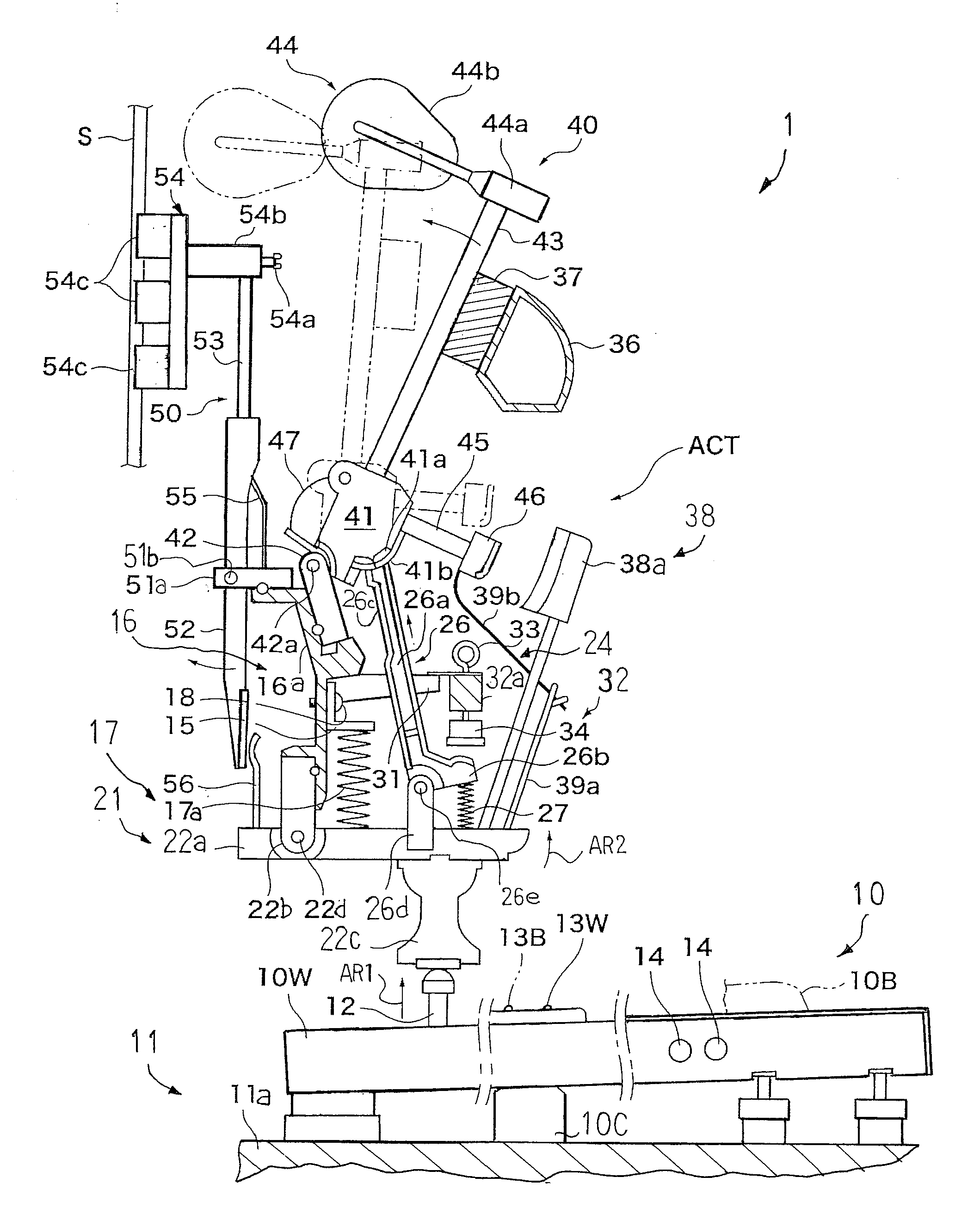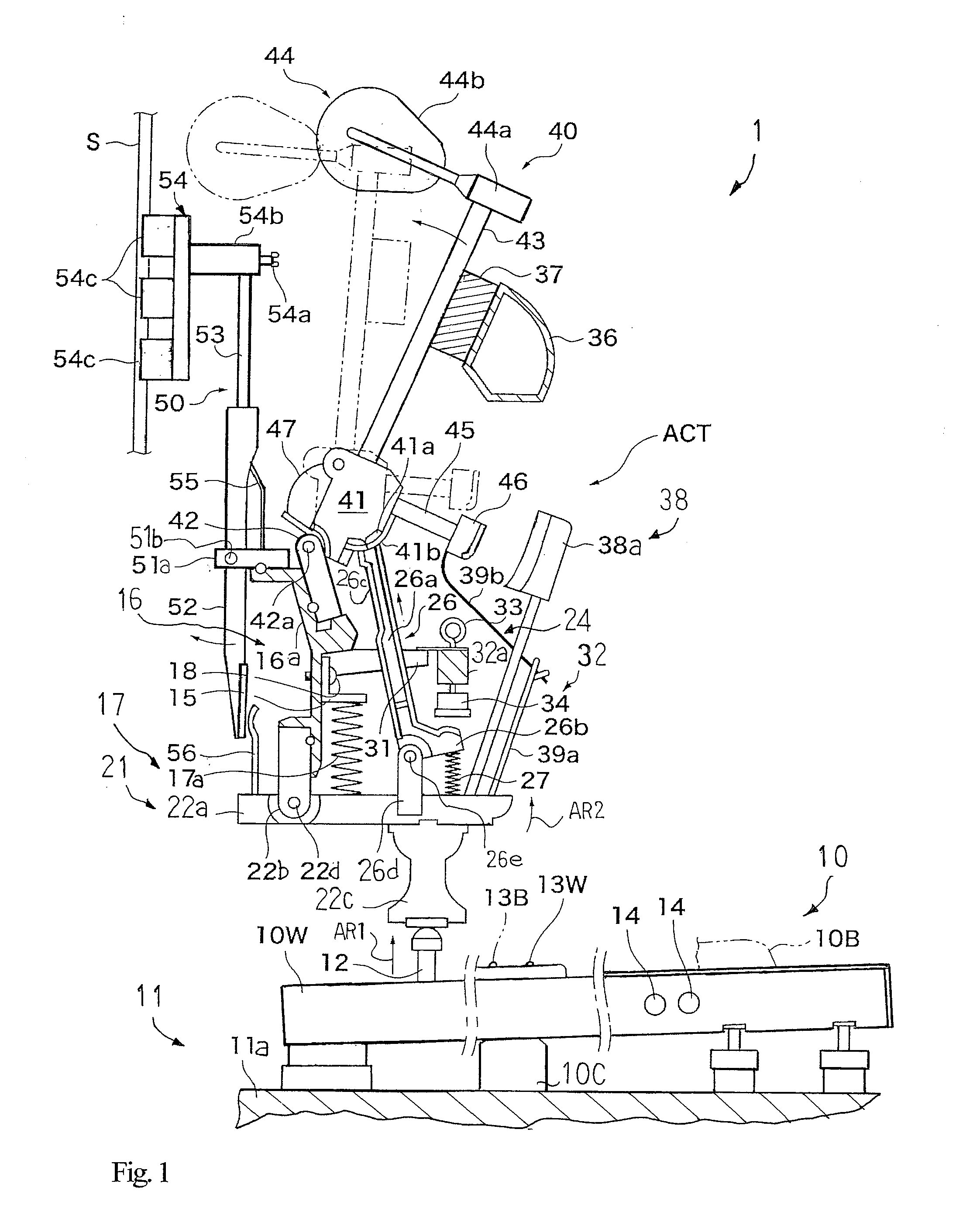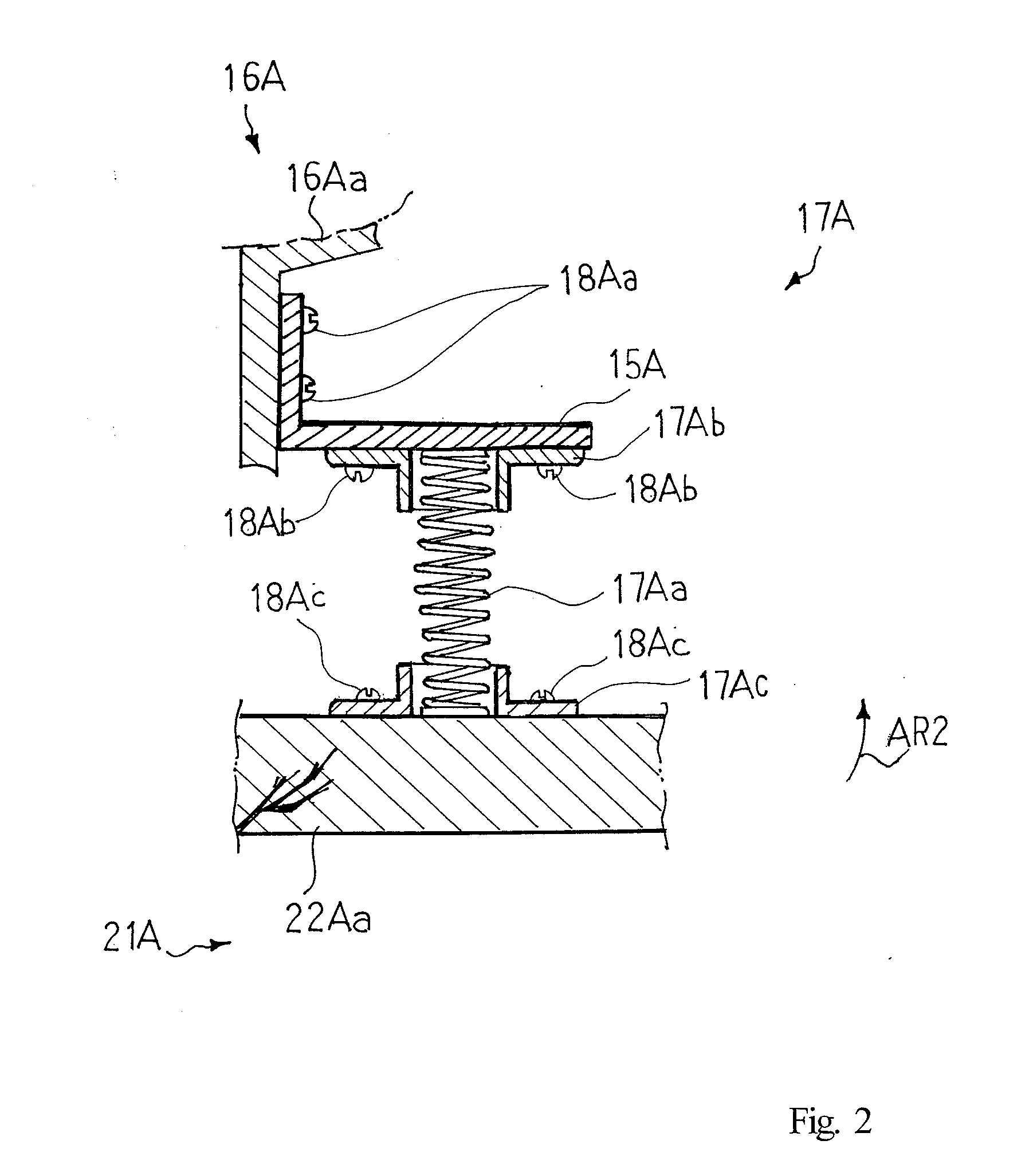Upright piano and action unit incorporated therein
- Summary
- Abstract
- Description
- Claims
- Application Information
AI Technical Summary
Benefits of technology
Problems solved by technology
Method used
Image
Examples
first embodiment
[0038]Referring first to FIG. 1 of the drawings, an acoustic upright piano 1 largely comprises a keyboard 10, a piano cabinet 11, plural action units ACT, plural hammer assemblies 40, plural damper mechanisms 50 and plural strings S. The piano cabinet 11 has a key bed 11a, which horizontally projects in the frontward direction, and the keyboard 10 is mounted on the key bed 11a in such a manner that a front portion of the keyboard 10 is exposed to a player who is sitting in front of the acoustic upright piano for fingering. An inner space is defined in the piano cabinet 11, and the action units ACT, hammer assemblies 40, damper mechanisms 50 and strings S are provided in the inner space of piano cabinet 11. The action units ACT are linked with the keyboard 10, and the hammers 40 and damper mechanisms 50 are connected in parallel to the keyboard 10. For this reason, the player can move the hammers 40 and damper mechanisms 50 through the fingering on the keyboard 10 for vibrations of t...
second embodiment
[0087]Turning to FIG. 2 of the drawings, a return accelerator 17A is incorporated in another acoustic piano 1A of the present invention. Although the upright piano 1A includes a keyboard, action units, hammer assemblies, strings and damper mechanisms, these component parts are similar in structure to those of the upright piano 1. For this reason, description on those component parts is omitted for the sake of simplicity.
[0088]A center rail 16Aa and a whippen 22Aa form a part of a supporting structure 16A and a part of each whippen assembly 21A, respectively. While a player is depressing the key, the whippen 22Aa rotates in the counter clockwise direction as indicated by the arrow AR2. On the other hand, when the player releases the depressed key, the whippen 22Aa rotates in the clockwise direction. The return accelerator 17A is provided for each of the keys 10B and 10W, and includes a bracket 15A, a compression coil spring 17Aa, spring seats 17Ab and 17Ac and bolts 18Aa, 18Ab and 18...
third embodiment
[0094]Turning to FIG. 3 of the drawings, a return accelerator 17B is incorporated in yet another upright piano 1B of the present invention. Although the upright piano 1B includes a keyboard, action units, hammer assemblies, strings and damper mechanisms, these component parts are similar in structure to those of the upright piano 1. For this reason, description on those component parts is omitted for the sake of simplicity.
[0095]A center rail 16Ba and a whippen 22Ba form a part of a supporting structure 16B and a part of each whippen assembly 21B, respectively. While a player is depressing the key, the whippen 22Ba rotates in the counter clockwise direction as indicated by the arrow AR2. On the other hand, when the player releases the depressed key, the whippen 22Ba rotates in the clockwise direction.
[0096]The return accelerator 17B is provided for each of the action units, and is broken down into a force applier 17Ba and a force regulator 17Bb. The force applier 17Ba exerts elastic...
PUM
 Login to View More
Login to View More Abstract
Description
Claims
Application Information
 Login to View More
Login to View More - R&D
- Intellectual Property
- Life Sciences
- Materials
- Tech Scout
- Unparalleled Data Quality
- Higher Quality Content
- 60% Fewer Hallucinations
Browse by: Latest US Patents, China's latest patents, Technical Efficacy Thesaurus, Application Domain, Technology Topic, Popular Technical Reports.
© 2025 PatSnap. All rights reserved.Legal|Privacy policy|Modern Slavery Act Transparency Statement|Sitemap|About US| Contact US: help@patsnap.com



